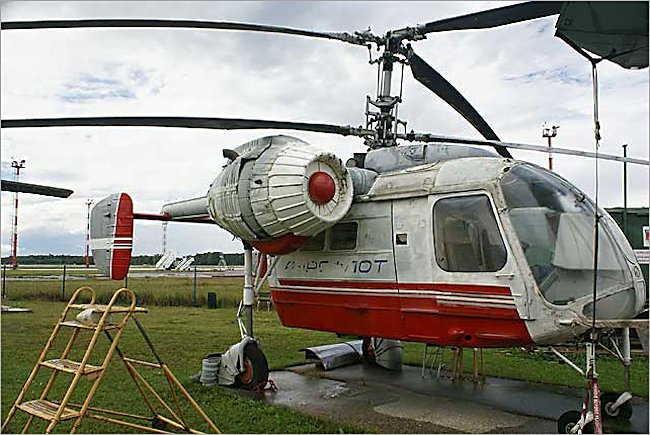Ka-26 Hoodlum helicopter
NATO gave the Kamov Ka-26 helicopter the code reporting name Hoodlum as all Soviet helicopters were assigned a name beginning with H. The Kamov Ka-26 Hoodlum was a Soviet light utility helicopter. It was unusual as it had co-axial rotors which are a pair of helicopter rotors mounted one above the other on concentric shafts, with the same axis of rotation, but that turn in opposite directions. The fuselage of the Ka-26 consists of a fixed, bubble-shaped cockpit containing the pilot and co-pilot, plus a removable, variable box available in medevac, passenger-carrying and crop duster versions.
It first flew on 18th August 1965. So far 850 have been built. It has a maximum speed of 170 km/h (91 knots, 105 mph) with a range of 400 km (215 nmi, 248 mi) (7 passengers, 30 min reserves). It had an endurance of 3 hr 42 min without needing to refuel. It has a service ceiling of 3,000 m (9,840 ft). It is powered by two Vedeneyev M-14 V-26 radial piston engines, 239 kW (320 hp) each. It has a crew of two and can carry up to six passengers in the removable pod.

Photograph taken at the Russian Aircraft Museum next to Riga International Airport Latvia
The Ka-26 was used by some WARPAC armies in the light airborne role, but its slow (150 km/h) cruise speed vulnerability limits its military use. It is, however, eminently useful for crop dusting. The coaxial main rotor configuration, which makes the Ka-26 small and agile, also results in a delicate airflow pattern under the helicopter, providing a thorough yet mild distribution of chemicals onto the plants.
The Ka-26 is often used to spray grape farms in Hungary, where conventional "main rotor and tail rotor" layout helicopters would damage or up-root the vine-stocks with their powerful airflow. Hungarian Kamov operators claim that coaxial rotors of the Ka-26 creates an airflow which allows pesticides to settle underneath, rather than on top of, the leaves, this means a much more effective distribution of pesticides, as most pests and parasites do not leave on the top side of foliage. Additionally, the coaxial vortex system is symmetrical, allowing the distribution of the pesticide to be more uniform